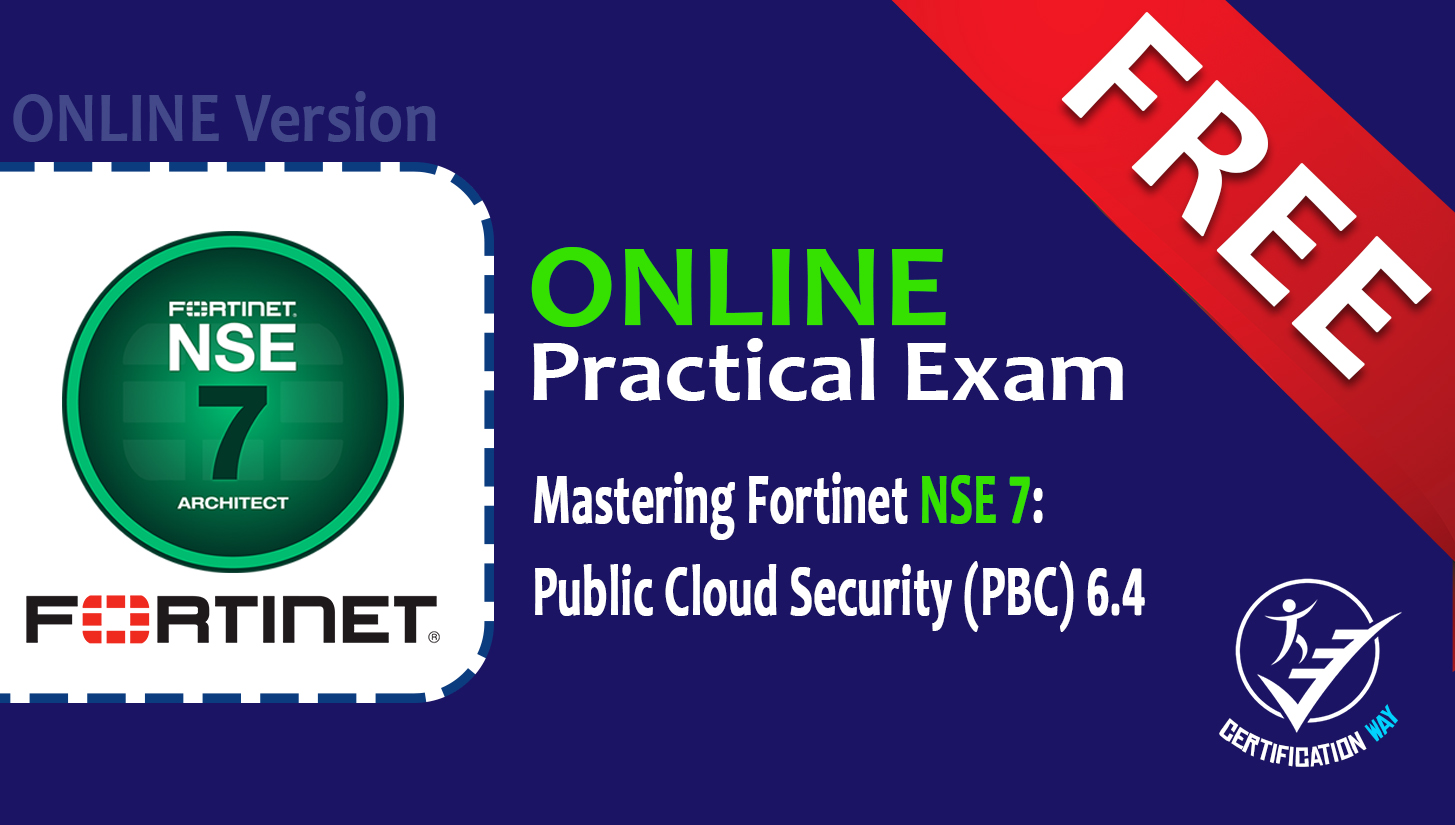Mastering Fortinet NSE 7: Public Cloud Security (PBC) 6.4
With CERTWAY , in the first , Fortinet NSE7_PBC-6.4 certification, or NSE 7 Public Cloud Security 6.4, is designed for network and security professionals who need advanced knowledge of deploying, managing, and troubleshooting Fortinet’s network security products in public cloud environments. This course focuses on ensuring security across cloud-based architectures using Fortinet’s tools, such as FortiGate and other components of the Fortinet Security Fabric within cloud infrastructures like AWS, Microsoft Azure, and Google Cloud Platform. What is Focus Areas of NSE7_PBC-6.4 Public Cloud Integration: Learn to deploy Fortinet’s security solutions in popular public cloud platforms (AWS, Azure, Google Cloud, and Oracle Cloud). Understand how to secure cloud workloads and applications. FortiGate Cloud Management: Master the use of FortiGate’s capabilities within cloud platforms, including setting up secure VPNs, traffic inspection, and integration with native cloud services. Advanced Cloud Security Features: Deep dive into advanced security features such as traffic segmentation, virtual WAN (SD-WAN) for cloud connectivity, and automated threat response. Troubleshooting and Performance Optimization: Learn troubleshooting techniques for network and security issues in public cloud environments. Optimize security and performance in cloud deployments. Cloud Security Best Practices: Cover cloud-specific security challenges and best practices for securing cloud environments with Fortinet’s products. Implement identity and access management, monitoring, and compliance policies specific to cloud environments.







